How to Make a Social Media Strategy that Works for You
Can you believe that social media hasn’t even reached its 30s yet? From now-defunct networks like SixDegrees and Myspace to those alive and thriving like Facebook and Instagram, social media has been an ever-changing landscape since the late 90s. And as we all know, those rapid changes can make it difficult to create a sound social media strategy and get buy-in from stakeholders.
But social media is here to stay (Facebook has over 2 billion daily active users), and it should be an essential part of your brand puzzle. So if you’re just starting out in setting guardrails around your social media presence, or if you want a refreshed strategy, this will be the perfect guide for you.
So how do you create a social media strategy that everyone can get behind — and that you can actually execute? We’ve tackled this problem for our own brand and our clients with a Social Media Playbook. It serves as an anchor to a consistent social media strategy, reduces revisions and pushback, and helps brands grow.
Here’s how you can create an effective social media strategy and playbook, no matter how big or small your brand is.
Creating a Social Media Playbook
An effective social media playbook sets a solid foundation and acts as a guide for social media efforts for a brand. While a social media playbook will often look a little different depending on the size and aesthetic of the brand, we recommend the following key elements:
- Social Media Trends + Insights
- Competitive Analysis
- Social Media Strategy
- Measurement + KPIs
Start Your Social Media Strategy with Your Business Goals
The best place to start with any good social media strategy is to identify your brand’s goals. This all starts with the most important question – What do you want your social media presence to do for you?
Do you want to:
- Increase brand awareness?
- Position yourself as an expert in your field?
- Show off a portfolio of products?
- Sell products via e-commerce?
- Help build a community around your brand?
- Generate leads?
- Get your brand in front of as many people as possible?
You will likely check off multiple boxes, which is great. Setting concrete business goals will allow you to create a thoughtful social media strategy.
Learn About Your Target Audience
Social media is not solely used by Millennials, Gen Z, and Gen Alpha. People from every conceivable walk of life use social media in some capacity, whether that’s to watch a video game stream on Twitch, post a life update on Facebook, or search for a homemade ranch dressing recipe on Pinterest. (As a Midwesterner, I may have done that last one a few times.)
People use the internet for all kinds of things, but do you know specifically what your target audience is doing on social media? If not, this is a good time to start using social listening. This can be done with a tool (I personally enjoy Brand24) or the good old-fashioned way—Googling and sifting through social media posts manually. The more you start searching, the more you uncover patterns about your audience and what they think of your brand.
As you start your search, keep these questions in mind:
- What can you glean from the members of your audience that are interacting/engaging with your current content? (Age range, gender, occupation, interests, or an active user of the platform)
- Are there multiple communities within your current audience?
- What hashtags are your audience members using? Can your brand use similar hashtags to reach current and new audiences?
- How does your current audience view your brand? (You can also check online reviews for more detail about this.)
- What things (outside your brand) are your audience interested in?
- Do you have a specific demographic you are focusing on?
These questions will help inform many decisions for the rest of your strategy.
Also, keep in mind that you’ll need to organize all this information — because you will likely learn a lot. I find it best to keep everything, such as user/audience patterns, links, pictures, and user quotes in an organization tool. My personal favorite is Milanote, but generally, the best tool for this is the one you already know how to use — even if it’s just a spreadsheet. Overall, the more you know about the audience you already have and want to attract to your content, the stronger your overall strategy will be.
My findings are typically formatted like this:
Choose the Right Social Media Platforms
Choosing the perfect mix of social media platforms for a brand can be difficult, especially as new ones are created every day. After doing your audience research, ask yourself what social media platforms your audience is on. If you go into this choosing platforms that your audience members aren’t interested in, your content won’t get the right eyes on it and likely get swept up in the void.
I have found success starting off with Instagram and Facebook first as a rule of thumb. Both platforms have a good mix of audience demographics, and you can easily cross-post content between them. It’s a great starter social media pack, especially if you’re still trying to get buy-in from stakeholders before creating a fully-fledged strategy.
Build the Cadence
Along with choosing the perfect combination of social media platforms, set your posting cadence. You want to make sure that the content workload is manageable.
Your calendar will likely be sparse starting out. Depending on available time and budget, a lower cadence might be 2 posts a week: Monday + Wednesday the first week, Tuesday + Thursday the next, and so on.
💡 Just a tip: I recommend investing in a social media posting scheduler. My personal favorite is Later. After you’ve fed them enough data, most schedulers will show you when your audience members are most active on each day of the week. This data can be a huge asset in setting a cadence going forward.
Identify Relevant Social Media Trends
Keeping track of social media trends is important. Many social media platforms create their own trend reports, and you should subscribe to newsletters from places like HeyOrca, Later, and Sociality. All of them are amazing resources that can help you keep on top of trends that could be relevant to add to this section of your playbook.
Look up the Competition
Choose 3–5 different companies that you know are your direct competitors, and research them. I like to attack it from all sides so I can paint a full picture of the brand, so I review 3 essential parts:
- Social Media
- Track follower count, likes, average engagement (positive or negative), content types, cross-posting vs. new content, and high-performing posts
- Product/Services
- Catalog services or products the company offers.
- Website
- Review key pages, messaging, differentiation, social proof, and visual direction.
From here, you can identify if there are either gaps that your brand can easily move into or things your competitors are doing that you can easily do, too.
Know Your KPIs
KPIs (or Key Performance Indicators) are the numbers that you will continually revisit to determine whether your social strategy is working. Remember back at the beginning of this blog when we talked about identifying your brand goals? That’s going to be helpful here. It’s a good idea to pick a few to start with, but here are the big ones:
- Followers: This number represents the number of users of the platform who are following your brand.
- Post Impressions: This is the amount of times your post has been viewed.
- Engagement: This number shows how much your content is being interacted with (for example: likes, favorites, comments, shares, and saves).
- Engagement Rate: This measures the rate at which your audience is actively engaging with your content.
- Video Plays: The amount of plays your video content has received.
- Clicks: The number of times your post has been clicked on (for example: a link, an expansion of an Instagram caption, or tapping on a Tweet to look through photos).
- Sales or leads: Set up tracking to ensure you can see which sales or leads can be attributed to your social media strategy
💡 Just a tip: If you’re starting a brand-new social media page, your engagement rate will often be in the double or triple digits as you’re gaining a following. I recommend focusing more on the other metrics on this list first. Once everything balances out, engagement rate will normalize alongside it.
Feel Confident In Your Social Media Strategy
A baseline social media strategy can help you get buy-in, reduce endless discussions and revisions, focus your attention on the places that matter most, and grow your brand. While the up-front work can be time-consuming, it’s worth the investment.
Don’t have the time to create a social media strategy and playbook on your own? We’d love to help! Contact us to start that journey with us.

